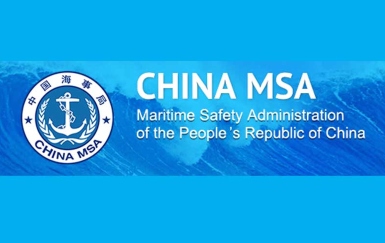 The China Maritime Safety Administration has issued a notice announcing a special safety inspection period to prevent the failure of ships’ mechanical and electrical equipment from 7 April 2024 until 31 October 2024. Lloyd’s Register issued an article to provide details about this period of extra scrutiny for ships entering Chinese ports and shipyards, advising foreign classification societies in China to enhance and improve:
The China Maritime Safety Administration has issued a notice announcing a special safety inspection period to prevent the failure of ships’ mechanical and electrical equipment from 7 April 2024 until 31 October 2024. Lloyd’s Register issued an article to provide details about this period of extra scrutiny for ships entering Chinese ports and shipyards, advising foreign classification societies in China to enhance and improve:
– Survey, inspection and testing during new construction
– Survey of conversion, renewal or repair of mechanical and electrical equipment
– Survey quality to reduce the risk of mechanical and electrical equipment failure.
In particular, the China Maritime Safety Administration has said that maritime management agencies at all levels should conduct detailed inspections of ships’ electromechanical equipment in conjunction with daily ship safety inspections.
If it is discovered through various channels that a ship has experienced electromechanical equipment failure, special inspections will be carried out in principle. For ships that have experienced two or more electromechanical equipment failures within 12 months, the maritime administration agency will invite shipping companies and ship inspection agencies to jointly conduct inspections, and require the ships to submit fault analysis reports and measures to prevent ship electromechanical equipment failures.
Any such equipment failures on board must be reported promptly to the local China Maritime Safety Administration and follow Chinese port authority safety requirements. Failure to comply could result in delays, detention in port and legal consequences.
Ships should conduct self-inspections on the ship’s safety technical status and electromechanical equipment in accordance with international conventions, domestic laws and regulations and other relevant regulations, and conscientiously implement the main responsibility for safety production.
7 key points to check whether the main propulsion device (prime mover) is normal:
1. Whether the fuel system of the main propulsion unit is normal (fuel supply unit, high-pressure oil pump, oil pipe, oil leakage monitoring, fuel heating, automatic fuel pump switching (if any).
2. Whether the communication facilities such as the console and driving platform clock are normal, and whether the nearby instruments such as the tachometer are normal.
3. Is the starting air system of the main propulsion device normal (main starting air bottle pressure, main air compressor, main starting valve, cylinder starting valve, air distributor.
4. Whether the main engine’s lubricating oil system is normal (whether there are traces of leakage in the pipelines and filter joints, whether the pressure gauge display is normal, whether the sensor joints are firm, whether the lubricating oil pump automatically switches (if any).
5. Whether the cooling water system of the main engine is normal (whether there are traces of leakage in the pipelines and coolers, whether the pressure gauge display is normal, whether the sensor joint is firm, whether the cooling water pump switches automatically (if any).
6. Check whether the host control air system is normal (control air pressure, control whether there is water in the air.
7. Main engine retreat measures (adjustable propeller blade pitch control system, clutch).
In addition to the inspection of the electromechanical equipment itself, attention should also be paid to the possibility that other systems may cause problems with the ship’s electromechanical equipment. For example, the malfunction of the fuel quick-closing valve may cause the accidental cutoff of the main/auxiliary engine fuel supply, the lack of mechanical and electrical equipment protection facilities may injure the crew and cause manual emergency stop of the equipment, and the failure of the bilge water system may cause engine room flooding. Additional attention should also be paid to crew fatigue issues on board ships and ships leaving the shipyard after repairs at the shipyard.

